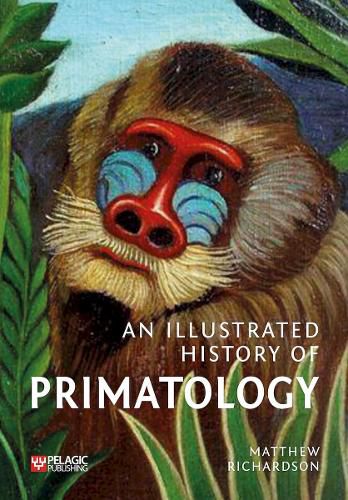Readings Newsletter
Become a Readings Member to make your shopping experience even easier.
Sign in or sign up for free!
You’re not far away from qualifying for FREE standard shipping within Australia
You’ve qualified for FREE standard shipping within Australia
The cart is loading…






From ancient Egypt and classical Greece to the twentieth-century development of primatology as a scientific field, we have always been fascinated by our closest animal relatives. This book offers an in-depth overview of primatology, taking the reader on a journey through the ages.
Reaching back as far as the Carthaginian explorer Hanno and Pliny the Elder, Matthew Richardson investigates how ancient cultures thought about other primates. With the birth of 'natural science' and the compilation of medieval bestiaries, we find the first recorded anatomical studies, along with captive chimpanzees and orangutans appearing in Europe. Development of the Linnaean binomial system and the era of global exploration saw great advances in primatology, in tandem with the growth of biological collections in European museums. In the nineteenth century, Darwin codified humans' relationship to our primate relatives in The Descent of Man. Meanwhile, the growing collections and expeditions inspired natural history artists to create a wealth of primate paintings and scientific illustrations still familiar today.
In the modern era we see the growth of primatology as a science, where a trio of remarkable women - Jane Goodall, Dian Fossey and Birute Galdikas - would devote their lives to studying primates in the wild. Gerald Durrell and others would pioneer captive breeding to help to save species now increasingly threatened. By the late twentieth century a 'decolonization' of primatology would take place in Africa, Asia and South America. Taxonomic splitting based on differences in DNA has resulted in an explosion of new species, as conservation becomes the main focus, with numerous primate species highly endangered.
This comprehensive one-volume synthesis will be essential reading for students of primatology, academics and anyone fascinated by humankind's history with our closest relatives.
$9.00 standard shipping within Australia
FREE standard shipping within Australia for orders over $100.00
Express & International shipping calculated at checkout
From ancient Egypt and classical Greece to the twentieth-century development of primatology as a scientific field, we have always been fascinated by our closest animal relatives. This book offers an in-depth overview of primatology, taking the reader on a journey through the ages.
Reaching back as far as the Carthaginian explorer Hanno and Pliny the Elder, Matthew Richardson investigates how ancient cultures thought about other primates. With the birth of 'natural science' and the compilation of medieval bestiaries, we find the first recorded anatomical studies, along with captive chimpanzees and orangutans appearing in Europe. Development of the Linnaean binomial system and the era of global exploration saw great advances in primatology, in tandem with the growth of biological collections in European museums. In the nineteenth century, Darwin codified humans' relationship to our primate relatives in The Descent of Man. Meanwhile, the growing collections and expeditions inspired natural history artists to create a wealth of primate paintings and scientific illustrations still familiar today.
In the modern era we see the growth of primatology as a science, where a trio of remarkable women - Jane Goodall, Dian Fossey and Birute Galdikas - would devote their lives to studying primates in the wild. Gerald Durrell and others would pioneer captive breeding to help to save species now increasingly threatened. By the late twentieth century a 'decolonization' of primatology would take place in Africa, Asia and South America. Taxonomic splitting based on differences in DNA has resulted in an explosion of new species, as conservation becomes the main focus, with numerous primate species highly endangered.
This comprehensive one-volume synthesis will be essential reading for students of primatology, academics and anyone fascinated by humankind's history with our closest relatives.